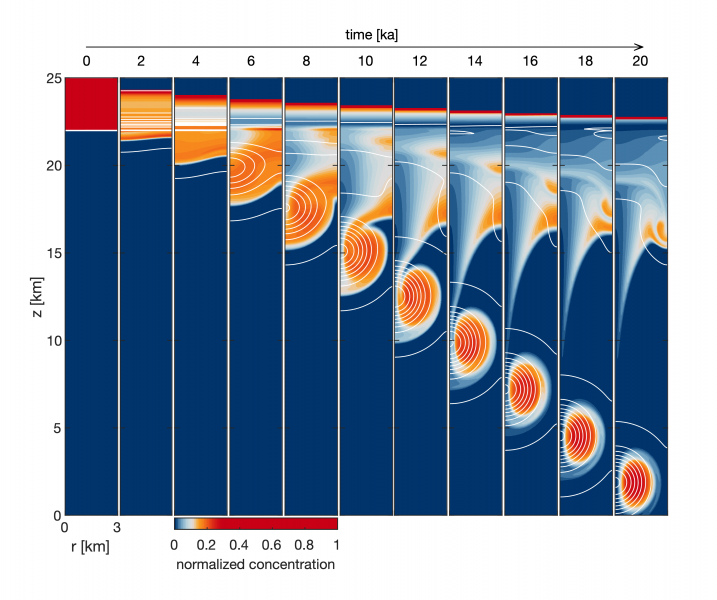How an Alien Ocean Gets Oxygen
December 5, 2022

On Jupiter’s moon Europa, an ice-covered ocean might harbor alien life. And if it’s anything like life as we know it, it will probably need oxygen.
Scientists at the Jackson School of Geosciences have built the world’s first physics-based computer simulation showing how oxygen could seep into the ocean from the surface, carried on plumes of salt water from beneath the moon’s “chaos terrain” — landscapes made up of cracks, ridges and ice blocks that cover a quarter of the icy world.
The simulation results show that not only is the transport possible, but that the amount of oxygen brought into Europa’s ocean could be on a par with the quantity of oxygen in Earth’s oceans today.
“It provides a solution to what is considered one of the outstanding problems of the habitability of the Europa subsurface ocean,” said lead researcher Marc Hesse, a professor in the Department of Geological Sciences.
The study was published in February 2022 in the journal Geophysical Research Letters.
Scientists think that chaos terrains form where Europa’s ice shell partially melts into brine. At the surface, this brine can then mix with oxygen, which is generated by sunlight and charged particles from Jupiter striking the icy surface.
The model created by the researchers shows the brine draining in a distinct manner as it passes through the ice, with the salty water forming a “porosity wave” that makes pores in the ice to momentarily widen — allowing the brine to pass through — before sealing back up. Hesse compares the process to the classic cartoon gag of a bulge of water making its way down a garden hose.
This mode of transport appears to be an effective way to bring oxygen through the ice, with 86% of the oxygen taken up at the surface riding the wave all the way to the ocean.
According to co-author Steven Vance, a research scientist at NASA’s Jet Propulsion Laboratory and the supervisor of its Planetary Interiors and Geophysics Group, the highest oxygen estimates would make the oxygen levels in Europa’s ocean similar to those in Earth’s oceans — which raises hope about life on the alien world.
Back to the Newsletter